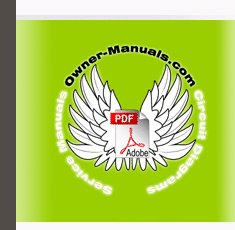|
|
|
Categories
|
|
Information
|
|
Featured Product
|
|
|
 |
|
|
There are currently no product reviews.
 ;
Exactly as described, the full user-manual (145 pages). Perfect.
SKS-L500.fm Page 3 Monday, October 3, 2005 2:33 PM
The plaque of each speaker rotates so that you can position the speakers upside down. Caution: A mounting screw�s ability to support a speaker depends on how well it�s anchored to the wall. If you have hollow walls, screw each mounting screw into a stud. If there are no studs, or the walls are solid, use suitable wall anchors. Use screws with a head diameter of 9.5 mm or less and a shank diameter of 4 mm or less. With hollow walls, use a cable/pipe detector to check for any power cables or water pipes before making any holes. Leave a gap of 5 mm Wall between the wall and the base of the screw head, as shown. (We recommend that you consult a home installation professional.)
SKR-L500 Surround back speaker
SKR-L500 Surround back speaker
SKC-L500C Center speaker
Green SKF-L500 Front right speaker SKF-L500 Front left speaker
SURROUND BACK SPEAKERS
SURROUND SPEAKERS
FRONT SPEAKERS
L
Blue
R
Gray 5 mm
CENTER SPEAKER
Connecting the Speakers
Read the following before connecting your speakers: � Turn off your amp before making any connections. � The nominal impedance of these speakers is 6 �. Use only an amp that supports this impedance. � Pay close attention to speaker wiring polarity. Connect positive (+) terminals to only positive (+) terminals, and negative (�) terminals to only negative (�) terminals. If the speakers are wired incorrectly, the sound will be out of phase and will sound unnatural. � Be careful not to short the positive and negative wires. Doing so may damage your amp.
SKM-L500S Surround right speaker
SKM-L500S Surround left speaker
Using Speaker Mounts/Brackets
Threaded inserts for 5 mm machine screws are provided for wall-mounting with commercially available speaker mounts and brackets (SKC-L500C: rear, SKM-L500S: rear and buttom). Refer to the manual supplied with your mounts or brackets for installation details. Note: Mount or bracket The portion of the screw that goes into the speaker�s threaded insert should be between 5 mm and 9 mm long.
5�9 mm 5 mm
Operating Precautions
â� Connecting the Speaker Cables
1 2
Strip the insulation from the ends of the speaker cables, and twist the bare wires tightly. Use the cables to connect each speaker�s input terminals to the corresponding speaker output terminals on your amp. To make a connection, while pressing the terminal lever, insert the wire into the hole, and then release the lever. Make sure that the terminals are gripping the bare wires, not the insulation.
The speakers can handle the speci�ed input power when used for normal music reproduction. If any of the following signals are fed to them, even if the input power is within the speci�ed rating, excessive current may �ow in the speaker coils, causing burning or wire breakage: 1. Interstation noise from an untuned FM radio. 2. Sound from fast-forwarding a cassette tape. 3. High-pitched sounds generated by an oscillator, electronic musical instrument, and so on. 4. Ampli�er oscillation. 5. Special test tones from audio test CDs and so on. 6. Thumps and clicks caused by connecting or disconnecting audio cables (Always turn off your ampli�er before connecting or disconnecting cables.) 7. Microphone feedback. � The speakers contain strong magnets, so do not put magnetic or iron objects such as screwdrivers close to them. If you do, the object may be attached to the magnets, causing personal injury or damage to the diaphragm.
3
|
|
 |
> |
|
